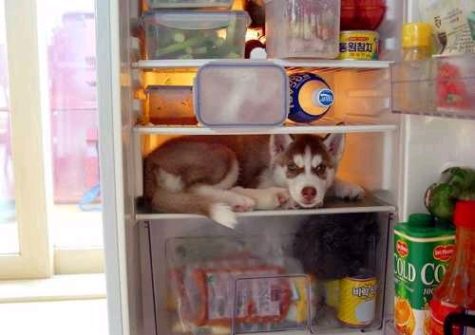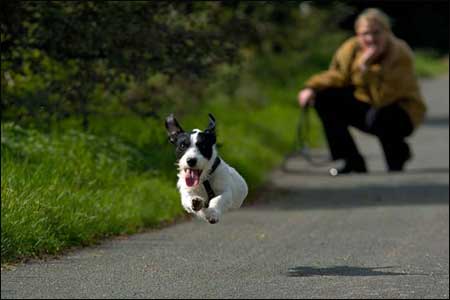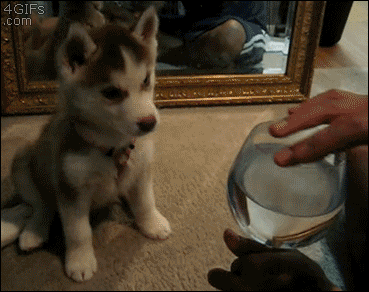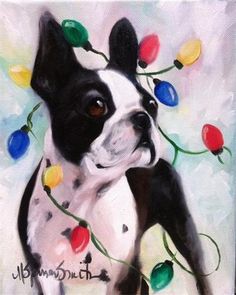Yearly Archives: 2017
Four Good Reasons To Train Your Dog
Maybe your dog doesn’t need training. Maybe you just think he doesn’t. Here’s a questionnaire that will help you decide. For the purpose of the questionnaire, we’ll pretend your dog is a boy, and his name is Buddy.
Scenario #1.
You have taken your dog with you on a camping trip. Your dog sees a skunk and thinks he has a new friend. You holler “No! Buddy come!” What happens?
- Several baths and one grooming appointment later, you can finally pet Buddy without holding your nose.
- You spend the rest of the weekend playing “chase me while I run away”. (Thank goodness the skunk had the same idea.)
- Luckily, Buddy was on a long leash, unfortunately he saw the skunk and has been barking uncontrollably ever since.
- For one long moment you hold your breath, and then all those obedience classes pay off as Buddy comes trotting back for praise and pets.
Scenario #2.
It has been sleeting for hours, the wind is blowing and it is a truly dreadful afternoon. You know that Buddy needs to do his business. You bundle up and head outside with him. What happens?
- One whiff of all that freezing drizzle and Buddy is down in the family room taking care of business really quickly before anyone can make him go outside.
- One whiff of all that wonderful ice and snow, and Buddy is zooming down the street having lots of big fun. You decide not to play the “catch the runaway dog game” and go back inside to wait for him to come to his senses.
- Luckily, you have had the foresight to put a leash on him, unluckily, Buddy is very very excited. He decides that he is now an Alaskan sled dog. He does not wait for the command “Mush!” and you spend the Holiday Season in a body cast.
- You cross your fingers, get a good grip on the railing and say, “Heel”. Buddy walks quietly at your side and then takes care of business. When you get back inside, you sit down with a cup of hot cocoa, while Buddy chews contentedly on the bone you got him for Christmas.
Scenario #3.
Your Great Aunt Thelma pays you a surprise visit, and you haven’t seen her in years. Of course you love her very much. You are also hoping she will leave you a little something in her will. You tell Buddy to “Sit and Stay” while you open the door. What happens?
- Buddy charges the door and knocks her down. You spend the next three weeks visiting Great Aunt Thelma in the hospital.
- Taking advantage of the excitement, Buddy makes a quick get-away out the door. You spend the remainder of her visit running all over the neighborhood looking for Buddy, and making repeated calls to the dog pound in hopes that if you can get there soon enough, the fines for a run-away dog won’t be too high.
- Luckily your Great Aunt loves dogs and doesn’t mind dog hair, dog kisses, or even a dog in her lap. Unfortunately Buddy decides he doesn’t like your Aunt Thelma and spends the rest of her visit barking and growling at her every time she moves.
- Both you and your Great Aunt are pleased to see how well Buddy responds to your commands, and you have an enjoyable visit. Four years later she dies and leaves you ONE MILLION DOLLARS!
Scenario #4.
You and your family sit down to Thanksgiving dinner. There is a nice turkey and it smells really good. Just then an alien spaceship lands in the neighbor’s yard. You all run outside to see it. Buddy runs out ahead of everyone. You holler “Stay!” What happens?
- Buddy runs up to the spaceship, and before you can move, a long green arm has scooped him up. You never see Buddy again.
- Sensing that this is no ordinary thing, Buddy backs up onto the porch and begins to bark uncontrollably. No one can hear anything the aliens are saying. Soon the spaceship zooms away and you spend the rest of your life wondering what they were saying.
- Luckily, Buddy hears from your tone of voice that you mean business. Unfortunately, he then goes inside and jumps onto the table and eats your Thanksgiving dinner.
- When he hears the command Buddy stops and waits to see what you will do. You communicate with the aliens and save the world from oblivion. A statue is erected in your honor. You insist that it be in the likeness of your dog Buddy.
Obedience is strongly recommended if:
- Your dog is out of control and making you crazy.
- You really do have a Great Aunt Thelma.
- You love your dog very much and hope one day to have a statue erected in his honor.
Written by: Shirley Janner
Note:
You are welcome to share this questionnaire but ONLY IF you give credit and a link back to Teach Your Dog To Behave or shirleytwofeathers.com.
Holiday Toxins and Dangers

This is the time of year when pets can be exposed inadvertently to toxic substances or tempting taste treats that can be dangerous.
One “toxic” plant you don’t have to worry much about is the poinsettia, though. These plants are either nontoxic or only slightly irritating to the gastrointestinal tract, depending on the reference source. On the other hand, mistletoe berries are poisonous and it is best to be very careful when hanging mistletoe so that pets are not exposed to the berries. Even one or two berries of this plant may be fatal. Even the products used to help plants make it through the holidays can be a problem.
Some of the solutions used to make the Christmas tree last through a long holiday season can be pretty irritating to mouth or stomach tissues. If you add these to the water in your Christmas tree stand you should be sure that pets can not drink the water.
Plants are not the only problems. Holiday food treats and decorations can be dangerous to pets. It takes a fairly large amount of milk chocolate to cause poisoning problems in dogs and cats but a whole box of chocolates is likely to cause diarrhea at the least and may be toxic to smaller pets.
Tinsel strands seem to be very attractive to cats and these will often cause severe problems, often requiring surgical removal to prevent the death of the cat if they are ingested. For some reason, almost every season a dog or cat in our practice eats a Christmas tree ornament or even one of the light bulbs off the tree. Chewing on the extension cords to the tree lights or the electric train around the tree sometimes leads to problems, too.
The abundance of food found at holiday tables presents a danger even if it isn’t cooked by your mother-in-law who believes in partially thawing the turkey then cooking it a 200 degrees. We see a definite increase in pancreatitis around the holidays due to pets getting fat laden table scraps. At least one dog a year manages to eat the whole turkey carcass and has a major case of constipation in a day or so. Try to resist the urge to cover the pet’s food with the extra gravy and put the trash out of reach of pets after an attractive meal!
Pets sometimes have a really hard time adjusting to the increases in family activity around the holidays. They may not handle the stress of house guests well. Often just scheduling a few minutes at approximately the same time each day to spend playing with your dog or reviewing those obedience exercises can make the holidays a lot easier for an anxious canine. Cats are a little harder to reassure and it is sometimes best just to make sure they have a safe haven in the house where the guests can’t find them, especially the very young guests. Make sure their litter pan is private, too.
If you are going to board your pet for the holidays make sure their vaccinations are current well before the time for boarding and check to see if there are special vaccination requirements at the boarding kennel, such as requiring Bordetella (kennel cough) vaccination. Make sure you have all the contact numbers for wherever you will be written down for the kennel, pet sitter or veterinary hospital. You might even consider giving your vet written permission to treat your pets in your absence, especially if your relationship with your vet is not close enough to be sure he or she would be comfortable caring for the pets without your permission.
Do not tranquilize pets for air travel if you are taking them with you, unless you are absolutely certain it is necessary. A recent review of pet deaths during airplane trips revealed that most of the pets who died had been sedated. The effects of sedatives are intensified at higher altitudes and even though cargo holds are pressurized they are at a lower atmospheric pressure than is found at ground level. If you do have to sedate a pet follow the veterinarian’s directions EXACTLY. It could save your pet’s life!
If you take a little time to prepare and think about the special risks holidays impose your pet should be safe. Just in case, make sure you know the number of the emergency veterinary hospitals in your are and can drive by it to be sure you can find it an emergency when you may not be thinking as clearly as on an ordinary day.
Source: Michael Richards, DVM
Training Do’s and Don’ts
All dogs (unless physically handicapped) see and hear and have feelings, so your first concern should be from your pup’s point of view. One very good way to consider him is to form one especially important habit right now. If you smoke, never do it while training or playing with your Buddy. A hot ash, accidentally dropped in his eye could cause irreparable damage.
Your body can be a towering mass for your pup to fear, or, as we hope, it can be his security and something to love. In training, try to visualize everything from his point of view. Therefore, instead of bending over so that you still tower over him, it’s much better to squat down and let him see you at the same level he is.
Be careful, too, about how you use your eyes. As crazy as it may seem to you, they can be very upsetting to your pup. Never stare at your Buddy; look over his head or to one side of him. Don’t forget that your intentions are transmitted to your pup in many ways, sometimes even in ways that we cannot fathom or explain to our own satisfaction. The bond that develops between the two of you is a great fulfillment and should not be dealt with lightly.
A list of ‘Do’s’ for training:
- Teach only what you understand.
- Follow any correction with praise and work.
- Work with your pup as a team.
- Wear quiet, comfortable shoes when training.
- Wear clothing that does not interfere with your pup.
- Stop your training before losing your temper.
- Be consistent with your training, at home or in class.
A list of ‘Don’ts’ for training:
- Correct by slapping with a lead.
- Correct if you are not positive your pup fully understands.
- Be a show-off with your training.
- Over train.
You know your dog-work WITH him. Don’t confuse him with sudden drastic changes. Avoid resentment as well. Practice. Practice. Practice. Take nothing for granted.
-excerpts from
The Pearsall Guide to Successful Dog Training
by Margaret E. Pearsall
Getting started with Dog Obedience Training
This was my standard handout for dog obedience classes.
You will need:
- Time – 1 hour a day
- Patience
- A sense of humor
- A strong desire to succeed
Training Collar:
- Sometimes called a “chain” or “choke” collar
- To insure a proper fit, the collar should slide easily, but not loosely, over your dog’s head. A training collar that is too loose will not work properly.
- Choose one with wide links – training collars made with thin narrow chains tend to cut into the dog’s neck.
- Don’t skimp on quality when choosing a training collar, pick a brand that is guaranteed against rust and breakage.
Regular Collar:
- If you have a shy, timid, or very small dog, we may decide to use a leather collar for training.
- Should fit tightly enough that only 2 fingers will fit between the collar and your dog’s neck. This is a safety precaution. If the collar is too loose and your dog balks or backs up, a loose collar will slide over your dog’s head and come completely off.
Other Collars:
- Depending on the situation, the size, sensitivity, and temperament of your dog, we may recommend the use of a ‘pinch’ or ‘prong’ collar for training.
- Small dogs and puppies that are shy, timid, very young, or very submissive may be started with a leather collar. It should fit tightly
enough that the collar cannot accidentally slip off your dog’s head. - Nylon slip collars will not be practical for training as they have a tendency to get caught in long hair, will heat up with repeated use, and often do not release properly
Leash:
- Retractable leashes and chain leashes are not practical for training.
- It is very important that your leash be six feet long. A four foot long leash will not be long enough to teach ‘stay’ and ‘come.’
- Leather is better, but nylon or cotton will do just fine.
- When choosing a leash, find something that feels comfortable in your hands. Something light and thin will be fine for small dogs, but if you have a large out of control dog, you will want a leash that will not cut into your hands.
- A good clasp is very important if you have a big strong dog, or a dog that pulls hard on the leash.
Training Area:
- When teaching your dog something new, choose a place to work with your dog where there is a minimum of distractions.
- When practicing commands that your dog already knows, choose a place with many temptations and distractions so that you can reinforce the training.
- A large area is nice, but all you really need is enough room to walk with your dog at your side.
- As soon as your dog knows and understands a command, begin to use it as part of your dog’s daily life. Do not, however, overwhelm your dog with obedience, especially in the beginning.
Treats:
- For puppy classes, treats are a great asset, but for the basic obedience training, I do not recommend the use treats as part of the
training. - This is because too often the dog learns right away to only perform if there is a treat involved.
- When dogs are stressed or nervous, when they are excited about new sounds and smells, when there is the distraction of other dogs and new people, or if your dog is timid or shy, they are not the least bit interested in even the most savory of treats.
- Also, the goal is for the dog to obey you, and listen to you because they love and respect you, not because there’s something in it for them.
Written by: Shirley Gibson
Note:
You are welcome to share this or use it in your own classes, but ONLY IF you give credit and a link back to Teach Your Dog To Behave or shirleytwofeathers.com.





